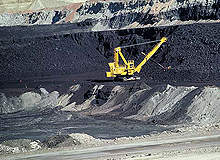
Keith Mwanalushi: There are a number of coal-dependant regions in the US, the Appalachia region being the biggest. How are you managing to strike a balance between jobs and the environment in these areas?
Environmental Protection Agency: We recognise the importance of coal to the Appalachia region, the other mining regions of the US and the nation’s energy mix. But we also have an obligation to prevent harm to our waters and environment.
Projects that damage water quality will be closely scrutinised according to our guidance, which specifically applies to the six Appalachian States of Kentucky, Ohio, Pennsylvania, Tennessee, Virginia, and West Virginia. The EPA expects to be able to work with mining companies to design future projects that are consistent with the best management practices and water quality protection requirements that this guidance sets out.
National Mining Association: Clearly, we are very concerned about maintaining coal mining jobs, which pay as much as twice the average annual wage in the states where we operate. These jobs are a significant part of the economic fabric of coal mining communities.
US coal mining is regulated at both the state and federal level. These regulations include the impact on water quality, protection of water resources and native species, protection of antiquities and how the mine will ultimately be reclaimed. It is the obligation of every mine operator to comply with the law.
KM: The US Office of Surface Mining and Reclamation and Enforcement (OSM) has proposed a new stream protection rule to tackle the downstream impacts of surface coal mining. How are you working towards this?
EPA: We are coordinating with the OSM as they develop a comprehensive and environmentally protective stream protection rule that complements the environmental and water quality standards for streams provided by the Clean Water Act. The EPA looks forward to its ongoing collaboration with OSM to achieve this goal.
NMA: We support the existing stream buffer zone rule, which was issued after an extensive environmental impact analysis and a robust public comment period.
KM: It is reported that the Nationwide Permit 21 – a type of fill permit that allows a surface mine operator to dump the excess material from the mine into streams – is being eliminated. Is there an update on this and what will be its impact?
NMA: For clarification, we do not "dump excess material into streams". We construct fills in valleys to hold the excess material. Any water that may flow through the valley during rains or similar must be diverted around the fill and is subject to state water quality standards, with significant oversight by the EPA.
The nationwide permits cover all type of activity that requires the construction of a fill to deposit excess rock and soil. Construction, road building, housing developments and so on all require the construction of fills. This is particularly true in the Appalachia region, where the terrain is very steep.
The "21" is the reference to fill permits for coal mining. The nationwide permitting system was devised to provide for more efficient permitting. If the applicant was meeting all provisions of the underlying law, which in our case is the Surface Mining Control and Reclamation Act, they received a permit. The EPA has done away with nationwide permitting for coal mining. All permits must now be individually reviewed and accompanied by a specific environmental impact analysis or statement.
KM: Current legislation also refers to mining safety within the coal industry. Surface coal mine fatalities were at an all time low in 2009 with just 18 recorded fatalities. What innovations in technology are helping to make surface mining safer?
NMA: Advancing technology is always a factor in improved safety performance, and equipment manufacturers have worked with mining companies on innovations that provide for improved visibility, better access to equipment to avoid muscle strains, improved stability on uneven terrain, and so on.
The NMA has launched a series of safety initiatives aimed at reducing accidents and fatalities associated with unsafe behaviour and practices at mining facilities through safetyshare.org. This tool reinforces the mining community’s ongoing effort to further improve health and safety at the nation’s underground and surface mines through greater safety awareness, improved training and advanced technology.
Technology is only part of the challenge. Improved training of the workforce and greater safety awareness all contribute to improved safety performance.



